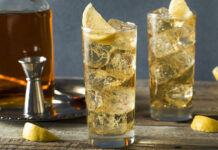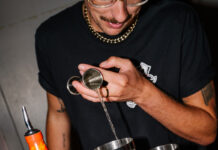Craft breweries from across the country give SLTN the lowdown on the industry
Do Bongers, Fierce Beer, Aberdeen
 When was the brewery first established?
When was the brewery first established?
Fierce came together in 2015 and the first official production mash was in 2016.
How many beers do you currently produce?
We have four guidelines: hoppy beers, fruity beers, dark beers, and specials. We also experiment with a side programme that’s about gin, cider and also mixed fermentation beer. In 2018 we made over 25 different beers; our seasonals always sell out incredibly quick.
What is currently your most popular beer?
Our smashable pale ale Dayshift keeps going strong the whole year and our new craft pilsner is pouring constantly.
The style popularity changes with the seasons. Fruity beers go really well in the summer, while our dark high-ABV beers go really well in the winter.
Since the brewery was established, what changes have you witnessed in the craft beer industry?
People’s palates are evolving with time. Craft beer fans get more excited about the science behind beer – and are open to old rediscovered styles.
Is there a preference from the trade for craft beers in can or bottle? What advantages does each format offer?
There are a few reasons why cans are better for your beer. Sunlight can damage hop-oils through the glass, so that will age your beer quicker. Also, cans are lighter, so are easier to distribute and it costs less energy. Your beer stays fresh longer and you can carry more than three in a bag.
Glass still has this authentic style and in bottles you can re-ferment your beers; this is impossible with cans.
Which styles of beer do you think will be popular in the coming months?
We at Fierce hope to put more layers and flavours in our beer to explore. We will always go for that little extra that will blow you out of your chair. We are really excited about our blended ciders and wild beers, which we are releasing at the end of the year.
Craig Cunningham, 71 Brewing, Dundee
 When was the brewery first established?
When was the brewery first established?
The brewery produced its first beer, Dundonian Pilsner, at the end of December 2018.
How many beers do you currently produce?
We currently have a core series of ten beers, as well as seasonals and specials which are produced around this.
What is currently your most popular beer?
Our Dundonian Pilsner is our most popular beer locally, but Passion Killer – a passion fruit sour – is our most popular beer around the UK.
Since the brewery was established, what changes have you witnessed in the craft beer industry?
There has been a movement back to cask ale, which has encouraged us to begin offering cask as a format. Cans have also grown dramatically, which helped us to make the decision to get our own canning line. This has allowed us to package our product in a preferred format at a much higher speed and efficiency.
Is there a preference from the trade for craft beers in can or bottle? What advantages does each format offer?
Can is definitely the preferred option now, although hotels and restaurants still prefer bottles. Cans let in no sunlight and are much lighter and environmentally friendly to ship, reducing our carbon footprint.
Which styles of beer do you think will be popular in the coming months?
We definitely see sours as being the most popular style, alongside IPAs, with more breweries starting mix fermentation and producing a lot more kettle sours as well.
Nigel Tiddy, Windswept Brewing, Lossiemouth
 When was the brewery first established?
When was the brewery first established?
November 2012.
How many beers do you currently produce?
We produce 18 beers.
What is currently your most popular beer?
Hurricane – a 4.5% ABV session IPA with Citra and Amarillo hops. Brewed to celebrate the RAF and RAF Benevolent Fund 100th anniversaries.
Since the brewery was established, what changes have you witnessed in the craft beer industry?
There has been a huge increase in microbrewing, with over 1200 additional breweries in the UK since we started. This has resulted in more competition for space on the bar, but also a great range of excellent beers. And customers are far better informed and understand more about what makes a good craft ale.
Is there a preference from the trade for craft beers in can or bottle? What advantages does each format offer?
Can is increasing in popularity but many customers still feel a bottle indicates better quality.
Which styles of beer do you think will be popular in the coming months?
More balanced, hoppy beers – and low-ABV beers, but still with plenty of fruit hop flavour.



















